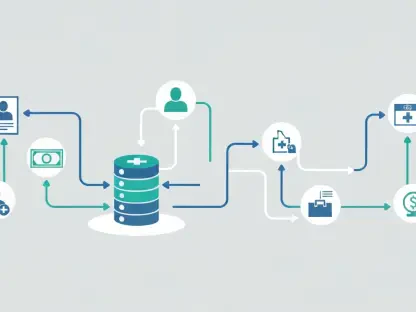The rise of AI-powered tools such as GitHub Copilot and ChatGPT has sparked considerable interest in how AI can assist developers in generating and using API SDKs (Software Development Kits). With its potential to streamline repetitive coding tasks, AI presents an exciting opportunity for enhancing API workflows. However, this new approach also comes with notable challenges, including issues of reliability, security, and nondeterminism. This article dives deep into the role AI can play in SDK generation, examines common pitfalls like hallucinations, and explores how AI can complement traditional code generation methods to offer a balanced and efficient development experience.
1. The Potential of AI in SDK Generation
APIs are the backbone of modern software applications, enabling different systems to communicate with one another. SDKs simplify API usage by offering developers prepackaged libraries and tools. Traditionally, SDK generation has been a manual, time-consuming process. Recent advancements in AI have opened up new possibilities for automating SDK creation. One key advantage of AI in SDK generation is its ability to handle mundane, repetitive tasks. By parsing through OpenAPI specifications or API documentation, AI can automate the creation of models, services, and other components needed to build an SDK. This cuts down on manual labor, enabling developers to focus on more complex and creative tasks.
For example, platforms like APIMatic are experimenting with AI to improve developer experiences by training AI to work alongside traditional code generation tools. In this hybrid model, AI can dynamically answer developer queries and explore API documentation, while deterministic code generators handle the reliable creation of static API access code. This combination can lead to more efficient and flexible SDK generation processes. However, despite these promising advancements, AI-based SDK generation is far from being a panacea and faces several critical challenges, such as nondeterminism, hallucinations, and security concerns.
2. Setting Up Authorization
Setting up authorization is crucial for ensuring that applications have the necessary permissions to interact with APIs securely. The code initiates OAuth 2.0 Authorization Code Flow to gain entry to Spotify’s API. It establishes the OAuth client ID, client secret, and redirect URI while requesting the necessary permissions to manage playlists, including the PlaylistModifyPrivate and PlaylistModifyPublic scopes. The client retrieves an OAuth token after user consent by taking them to the Spotify authorization page. This token is then employed to validate API requests. This step is essential for secure and controlled access to user data and API functionalities.
The process ensures that only authorized applications can perform actions on behalf of users, protecting both the user’s data and the integrity of the API. Additionally, setting up proper authorization mechanisms helps track usage and manage rate limits effectively, ensuring that the API remains responsive and available to all users. However, it also introduces complexities that require careful handling, such as managing token expiration and ensuring secure storage and transmission of sensitive credentials. Properly implementing these mechanisms is critical for maintaining the security and reliability of the application.
3. Creating a Fresh Playlist
Following authorization, a PlaylistsController is instantiated to handle playlists. A playlist named “Taylor Swift Top 10” is formed using the CreatePlaylistAsync method, with privacy settings and description parameters provided. This step demonstrates how AI can simplify interactions with APIs by generating code that leverages predefined methods and classes. Creating a new playlist involves sending an API request with the playlist details, which the backend processes to store the information and create the playlist on the user’s account. The PlaylistsController simplifies this process by abstracting the API calls into manageable methods, making it easier for developers to implement complex functionalities with minimal effort.
This example showcases how AI-generated code can streamline common tasks, allowing developers to focus on more innovative aspects of their applications. However, it also highlights the importance of understanding the underlying API structure and requirements to ensure that the generated code meets the expected use cases. Developers must ensure that the parameters provided are accurate and adhere to the API specifications to avoid errors and ensure a smooth user experience. Properly leveraging AI-generated code in this context can significantly improve development efficiency and reduce the time needed to implement new features.
4. Retrieving Taylor Swift’s Leading Tracks
The ArtistsController is utilized to obtain Taylor Swift’s top tracks with GetAnArtistsTopTracksAsync, specifying the artist’s Spotify ID (06HL4z0CvFAxyc27GXpf02) and market (US). The result is a compilation of top tracks, inclusive of their URIs (unique Spotify track identifiers). This step illustrates how AI-generated code can facilitate interactions with specific API endpoints to retrieve data. By using predefined methods and classes, developers can easily access and manipulate data from various sources, making the development process more efficient and streamlined.
The ability to quickly generate code that interacts with complex APIs allows developers to implement advanced features without deep knowledge of the underlying API structure. This can significantly reduce development time and effort, enabling developers to focus on enhancing the overall user experience. Additionally, AI-generated code can help ensure consistency and accuracy in API interactions, reducing the likelihood of errors and improving the reliability of the application. However, developers must still review and validate the generated code to ensure it meets their specific requirements and adheres to best practices.
5. Adding Tracks to the Playlist
The code subsequently includes these leading tracks to the newly created playlist using AddTracksToPlaylistAsync. It sends a list of track URIs to the playlist using the playlistId received from the playlist creation response. This step demonstrates how AI-generated code can facilitate the integration of different API functionalities to create a cohesive user experience. By combining data retrieval and manipulation methods, developers can implement complex workflows that provide valuable features to users with minimal effort. The ability to quickly generate code that handles these interactions can significantly improve development efficiency and reduce the time needed to bring new features to market.
While AI-generated code can streamline the development process, it is crucial for developers to review and validate the code to ensure it meets the required standards. This includes checking for potential security vulnerabilities, ensuring proper error handling, and verifying that the code adheres to best practices. By maintaining a balance between AI-generated code and manual validation, developers can leverage the benefits of AI while ensuring the reliability and security of their applications. This approach can lead to more efficient and effective development processes, ultimately resulting in better user experiences and more robust applications.
6. Challenges with AI-Generated SDKs
While AI-generated SDKs offer numerous benefits, they also present several critical challenges that developers must address to ensure successful implementation and use. Nondeterminism refers to the inability of AI models to consistently generate the same output for identical inputs. This is especially problematic for SDK generation, where consistency is key. If an SDK generated by an AI assistant differs slightly each time, it can cause significant integration issues down the road. Developers need to trust that the code generated will be consistent and reliable — an area where AI currently falls short. Ensuring consistent and deterministic code generation is essential for building reliable and maintainable applications, and it is an area where AI has room for improvement.
One related issue is “hallucination,” where AI generates syntactically correct code that does not align with the underlying logic or API documentation. For instance, the AI may misinterpret an API endpoint or create functions that, while appearing functional, are entirely unusable in practice. This could lead to frustrating debugging sessions, where developers have to sift through lines of faulty AI-generated code to correct hallucinations or inconsistencies. Ensuring that AI-generated code adheres to the correct logic and accurately represents the intended functionality is critical for maintaining the reliability and usability of the SDK. Developers must remain vigilant and thoroughly review AI-generated code to catch and correct any errors or inconsistencies.
7. Hybrid Approach: Combining AI and Deterministic Code Generation
Given the limitations outlined above, AI is not yet ready to replace traditional SDK generation methods. However, a hybrid approach that combines the strengths of AI and deterministic tools offers a promising solution. While deterministic code generators like APIMatic ensure reliable, repeatable results, AI can enhance flexibility and assist with more dynamic tasks. Exploring APIs with AI: Before diving into the code, developers need to understand the API’s concepts, limits, and potential use cases. AI is well-suited for dynamically answering these types of queries, sifting through documentation, and providing high-level insights into how the API functions.
By leveraging AI’s natural language understanding capabilities, developers can quickly get up to speed on complex APIs without needing to manually parse extensive documentation. Once the conceptual phase is over, deterministic code generation tools should take over. These tools are designed to handle the repeatable, reliable generation of API access code, which includes authentication flows, request handling, and endpoint communication. Because this part of the workflow requires consistency and security, traditional methods are still the best fit. After the static SDK code is in place, AI can again assist developers in building custom business logic that interacts with the API.
8. The Future of AI in SDK Generation
As AI continues to evolve, its role in SDK generation is expected to grow, though certain challenges remain. For now, combining AI with traditional code generation methods offers a balanced approach to boosting developer productivity without sacrificing reliability or security. However, a significant future development is the integration of workflow-oriented specifications, like Arazzo, into API design and consumption. This specification can greatly benefit AI’s application in SDK generation by helping manage multistep workflows that require contextual awareness and state management.
As token limitations expand and AI systems improve their ability to maintain context and memory, future developments could allow AI to handle larger codebases and multistep workflows more efficiently. With enhanced specifications like Arazzo, the accuracy and applicability of AI-generated SDKs will improve, paving the way for a more seamless and reliable development experience. The future of AI in SDK generation will likely involve a deeper integration with workflow-driven specifications like Arazzo, enhancing the AI’s capability to handle complex API interactions and stateful operations while still relying on traditional methods for static code generation and security management.
Conclusion
AI-powered tools like GitHub Copilot and ChatGPT are generating significant interest in the tech world, particularly in how they can help developers create and utilize API SDKs (Software Development Kits). These tools promise to streamline repetitive coding tasks, presenting an exciting opportunity to enhance API workflows. By leveraging AI, developers can potentially save time and focus on more creative aspects of coding. However, this new way of working isn’t without its challenges. Key concerns include the reliability and security of AI-generated code, as well as issues with nondeterminism and hallucinations—situations where AI generates incorrect or misleading information.
In addition, there are questions about how well AI can integrate with traditional code generation methods. While AI can offer significant efficiencies, it’s crucial to strike a balance that combines these new capabilities with tried-and-true coding practices. This hybrid approach aims to provide a more balanced and efficient development experience. This article explores the role AI can play in SDK generation, delves into common pitfalls, and looks at how AI can work alongside traditional methods to offer a comprehensive and effective solution for developers.









